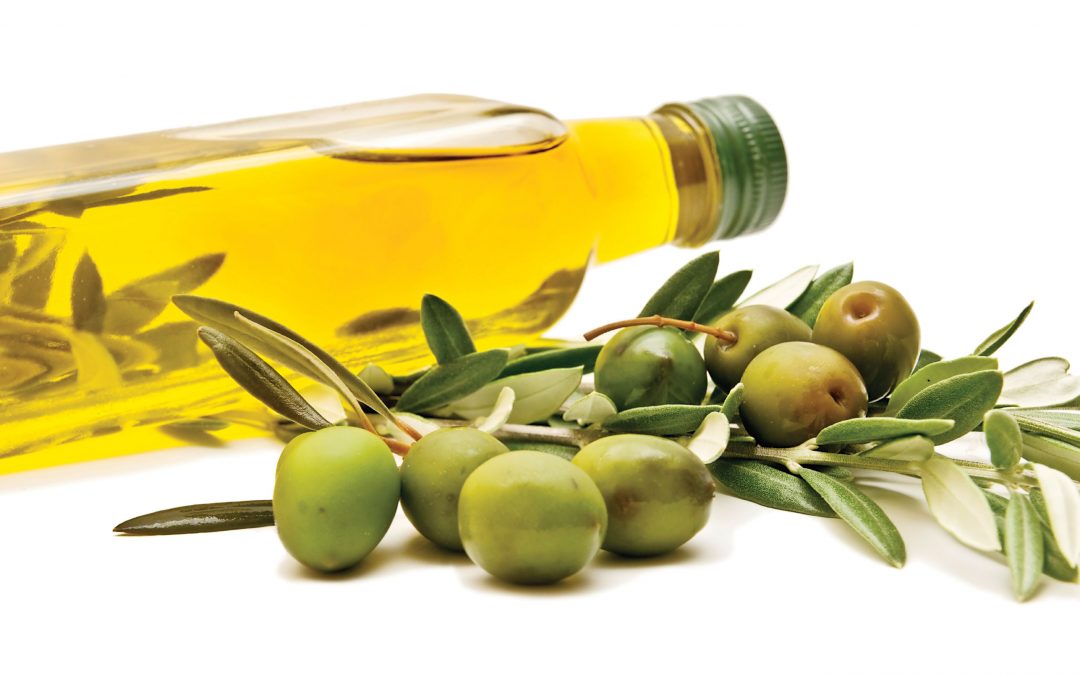About the smoke point and olive oil
When cooking or frying with olive oil, you need to take care not to push the oil past its parameters. No oil should be heated beyond its smoke point if you wish the oil to remain safe (non-carcinogenic). The smoke point is the temperature that an oil starts to disintegrate at, and the sign is the smoking or burning.
Smoke point is more than just one set temperature
The reason you may be confused about the smoke point of olive oil is because the smoke point depends on the quality of the olive oil. High-quality extra virgin olive oils have low free fatty acids, and a higher smoke point. Extra virgin means the first cold pressing of the olives, so imagine two big clamps squeezing the oil out of the olive – the first pressing is the first lot of oil to come out of the olives. This oil is excellent quality, but costs more.
Cold-pressed virgin oils are vastly different to chemically- or heat-extracted oils, which are the ones you find in clear plastic bottles at the supermarket. These are not for those on a pesco-vegan diet, as they are damaged fats.
Low-quality olive oils are mass produced and have a lower smoke point, so generally the price of the oil will determine its usefulness on the pesco-vegan diet.
High-quality extra-virgin olive oil smokes at between 185ºC and 204ºC (365ºF and 399ºF), and this point depends on the free fatty acid content – different olives from different groves in varying countries and climates produce slightly different components, which gives the varied flavours and textures of oils.
Olive oil is actually a stable fat if you use it within its bounds.
Frying food can be done at about 180ºC (356ºF), which means so long as you are using high-quality olive oil, you will be within the safe zone. Remarkably, the oil could even be reused if it wasn’t overheated though this may be pushing the boundaries of safety because once oil is exposed to oxygen and light, it starts to degrade. This is why good oil will always be in a dark green or brown bottle with a small opening.
It is also a good idea to buy oil in bulk in a tin, and then decant it out into a dark bottle for use. A glass bottle of oil sitting on a supermarket shelf is going to be less intact than one stored in dark, cool conditions.
An easy-reference temperature guide is:
- Medium: Vegetables, potatoes, fruit (130-145ºC/266-293ºF)
- Hot: Anything battered or floured that goes crispy (155-170ºC or 311-338ºF )
- Very Hot: Small, quickly-fried like seafood (175–190ºC or 347-374ºF)
To compare, the smoke point of other oils is:
- High-quality extra virgin olive oil: 185ºC and 204ºC (365ºF and 399ºF)
- Grape Seed Oil: about 252ºC (485ºF)
- Avocado Oil: about 249ºC (480ºF)
- Sesame Oil: about 249ºC (410ºF)
- Canola Oil: about 204ºC (400ºF)
- Macadamia Oil: about 196ºC (385ºF)
Keep in mind that every plant and seed producing oil is grown in a different area, with different conditions, and produces slightly different oils.
The nature of cooking with oils
High frying temperatures are best: the sugars in the food caramelise, and the proteins denature into a thin shell that then stops the oil from penetrating food – no doubt you’ve experienced sloppy fried food after trying to put the food in before the oil is hot enough. This hot temperature therefore allows the food to retain its soft interior, with a crispy outer, making it delicious.
It has been recommended by Irma Rombauer (The Joy of Cooking) that frying at 185ºC (365ºF) is the best. This means that all the oils mentioned above can be used safely.
How to figure out the smoke point of your favourite oils at home
There are many answers for ‘smoke point of oil’ online, with many oil distributors claiming that ‘their’ oil has the highest smoke point. The truth is, it is variable, and the only way to find out is get a food thermometer and do a test yourself.
Get a small pot and heat it up with the frying thermometer in it. Usually they’d do this in a science lab, but the principle is the same: watch for the first whiff of smoke, and there’s your smoke point.
You can get more information from the International Olive Council (IOC).
The how-to and what-for of hydrogenation and trans fats

